Jean-Michel Basquiat (1960-1988)
Get a Jean-Michel Basquiat (1960-1988) Certificate of Authenticity for your painting (COA) for your Jean-Michel Basquiat (1960-1988) drawing.
For all your Jean-Michel Basquiat (1960-1988) artworks you need a Certificate of Authenticity (COA) in order to sell, to insure or to donate for a tax deduction.
Getting a Jean-Michel Basquiat (1960-1988) Certificate of Authenticity (COA) is easy. Just send us photos and dimensions and tell us what you know about the origin or history of your Jean-Michel Basquiat (1960-1988) painting or drawing.
If you want to sell your Jean-Michel Basquiat (1960-1988) painting or drawing use our selling services. We offer Jean-Michel Basquiat (1960-1988) selling help, selling advice, private treaty sales and full brokerage.
We have been authenticating Jean-Michel Basquiat (1960-1988) and issuing certificates of authenticity since 2002. We are recognized Jean-Michel Basquiat (1960-1988) experts and Jean-Michel Basquiat (1960-1988) certified appraisers. We issue COAs and appraisals for all Jean-Michel Basquiat (1960-1988) artworks.
Our Jean-Michel Basquiat (1960-1988) paintings and drawings authentications are accepted and respected worldwide.
Each COA is backed by in-depth research and analysis authentication reports.
The Jean-Michel Basquiat (1960-1988) certificates of authenticity we issue are based on solid, reliable and fully referenced art investigations, authentication research, analytical work and forensic studies.
We are available to examine your Jean-Michel Basquiat (1960-1988) painting or drawing anywhere in the world.
You will generally receive your certificates of authenticity and authentication report within two weeks. Some complicated cases with difficult to research Jean-Michel Basquiat (1960-1988) paintings or drawings take longer.
Our clients include Jean-Michel Basquiat (1960-1988) collectors, investors, tax authorities, insurance adjusters, appraisers, valuers, auctioneers, Federal agencies and many law firms.
We perform Jean-Michel Basquiat art authentication, appraisal, certificates of authenticity (COA),s analysis, research, scientific tests, full art authentications. We will help you sell your Jean-Michel Basquiat or we will sell it for you.
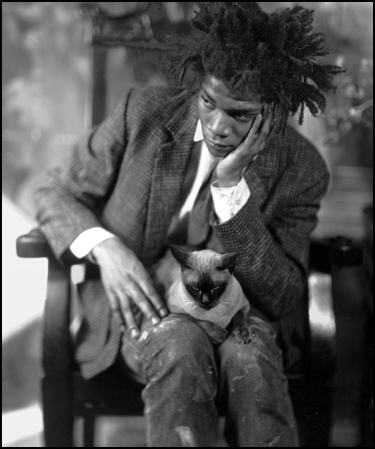
Jean-Michel Basquiat
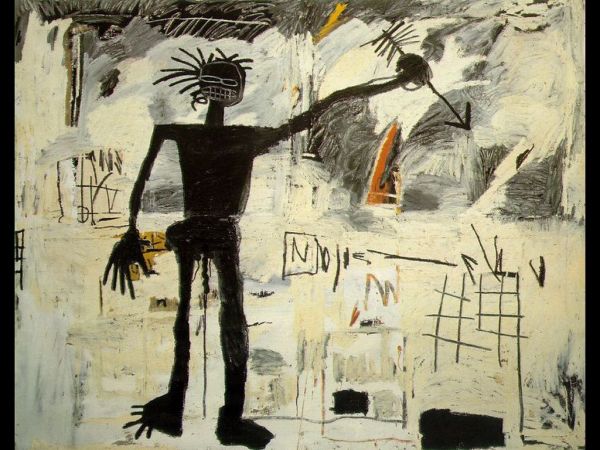
Self-Portrait
Jean-Michel Basquiat was an American artist. He gained popularity, first as a graffiti artist in New York City, and then as a successful 1980s-era Neo-expressionist artist. Basquiat’s paintings continue to influence modern day artists and command high prices.
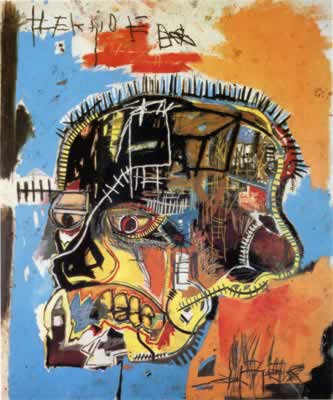
Untitled Skull 1981
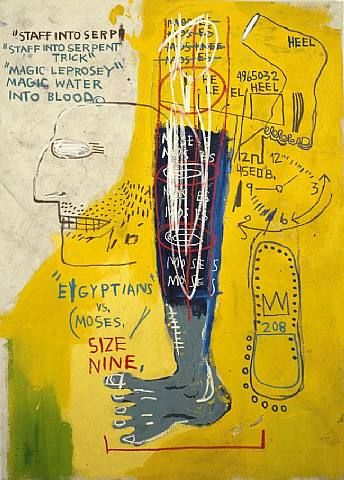
Early Moses
Basquiat’s mother, Matilde, was Puerto Rican and his father, Gerard Jean-Baptiste, is of Haitian origin and a former Haitian Minister of the Interior. At an early age, Basquiat displayed an aptitude for art and was encouraged by his mother to draw, paint, and to participate in other art-related activities. In 1977, when he was 17, Basquiat and his friend Al Diaz started spray-painting graffiti art on slum buildings in lower Manhattan, adding the infamous signature of “SAMO” or “SAMO shit” (i.e. “same ol’ shit”). The graphics were pithy messages such as “Plush safe he think; SAMO” and “SAMO is an escape clause”. In December 1978, the Village Voice published an article about the writings. The SAMO project ended with the epitaph SAMO IS DEAD written on the walls of SoHo buildings.

SAMO with Ernok, 1982

Head 1
In 1978, Basquiat dropped out of St. Joseph High School, Greenville and left home, a year before graduating. He moved into the city and lived with friends, surviving by selling T-shirts and postcards on the street. By 1979, however, Basquiat gained a certain celebrity status amidst the thriving art scene of Manhattan’s East Village, for his regular appearances on Glenn O’Brien’s live public-access cable show, TV Party . In the late 1970s, Basquiat formed a band called Gray, with the then-unknown musician and actor Vincent Gallo. Gray played at clubs such as Max’s Kansas City, CBGB, Hurrahs, and the Mudd Club. Basquiat worked with Gallo again in a film Downtown 81 (a.k.a New York Beat Movie) which featured some of Gray’s rare recordings on its soundtrack. He also appeared in Blondie’s video for “Rapture”.
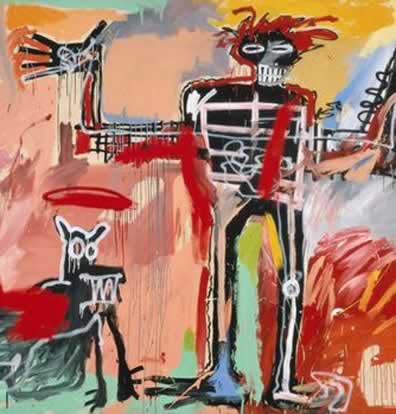
Boy and Dog in a Johnnyjump, 1982
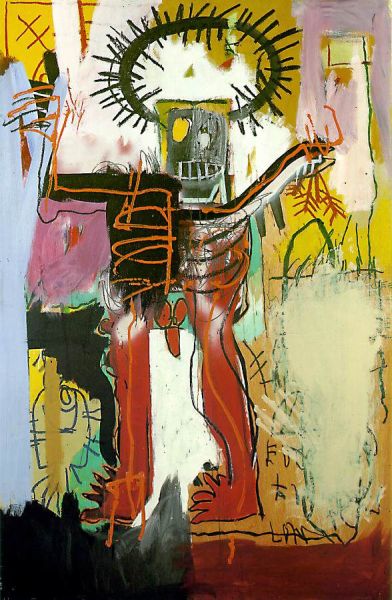
Untitled 1981
Basquiat first started to gain recognition as an artist in June 1980, when he participated in The Times Square Show, a multi-artist exhibition, sponsored by Collaborative Projects Incorporated (Colab). In 1981, poet, art critic and cultural provocateur Rene Ricard published “The Radiant Child” in Artforum magazine, helping to launch Basquiat’s career to an international stage. During the next few years, he continued exhibiting his works around New York alongside artists such as Barbara Kruger, as well as internationally, promoted by such gallery owners and patrons as Annina Nosei, Vrej Baghoomian, Larry Gagosian, Mary Boone and Bruno Bischofberger.

Graffiti

Jimmy Best
By 1982, Basquiat was showing regularly alongside Julian Schnabel, David Salle, Francesco Clemente and Enzo Cucchi, thus becoming part of a loose-knit group that art-writers, curators, and collectors would soon be calling the Neo-expressionist movement. He started dating an aspiring and then-unknown performer named Madonna in the fall of 1982. In 1982, Basquiat met Andy Warhol, with whom he collaborated extensively, eventually forging a close, if strained, friendship. He was also briefly involved with artist David Bowes.

Untitled, Boxer
By 1984, many of Basquiat’s friends were concerned about his excessive drug use and increasingly erratic behaviour, including signs of paranoia. Basquiat had developed a frequent heroin habit by this point, starting from his early years living among the junkies and street artists in New York’s underground. On February 10, 1985, Basquiat appeared on the cover of The New York Times Magazine in a feature entitled “New Art, New Money: The Marketing of an American Artist”. As Basquiat’s international success heightened, his works were shown in solo exhibitions across major European capitals.
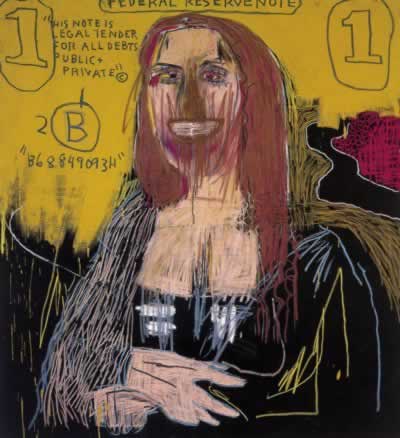
Mona Lisa 1983

Untitled, Rinso
Basquiat died of mixed-drug toxicity (he had been combining cocaine and heroin, known as “speedballing”) in his Great Jones Street loft/studio in 1988 several days before what would have been Basquiat’s second trip to the Côte d’Ivoire. After his death, a film biography entitled Basquiat was made, directed by Julian Schnabel, with actor Jeffrey Wright playing Basquiat.

Brown Spots 1984

Untitled
Basquiat’s art career is known for his three broad, though overlapping styles. In the earliest period, from 1980 to late 1982, Basquiat used painterly gestures on canvas, often depicting skeletal figures and mask-like faces that expressed his obsession with mortality. Other frequently depicted imagery such as automobiles, buildings, police, children’s sidewalk games, and graffiti came from his experience painting on the city streets. A middle period from late 1982 to 1985 featured multipanel paintings and individual canvases with exposed stretcher bars, the surface dense with writing, collage and seemingly unrelated imagery.

In this Case 1983
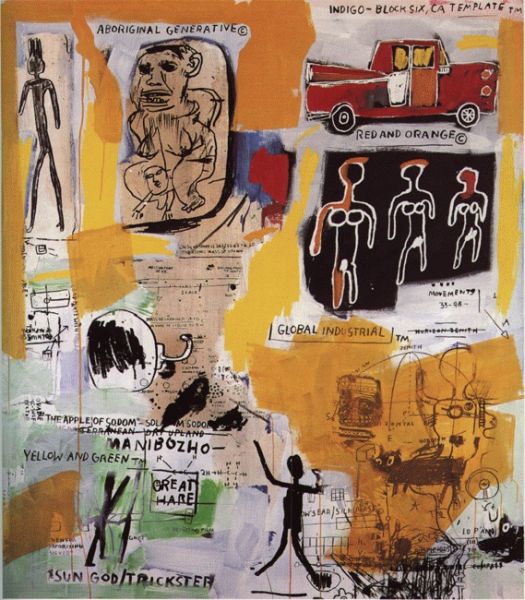
Untitled 1984
These works reveal a strong interest in Basquiat’s black identity and his identification with historical and contemporary black figures and events. On one occasion Basquiat painted his girlfriend’s dress, with his words, a “Little Shit Brown”. The final period, from about 1986 to Basquiat’s death in 1988, displays a new type of figurative depiction, in a new style with different symbols and content from new sources. This period seems to have also had a profound impact on the styles of artists who admired Basquiat’s work. Basquiat’s lasting creative influence is immediately recognizable in the work of subsequent and self-taught generational artists such as Mark Gonzales, Kelly D. Williams, and Raymond Morris.

Tenor 1985
In 1982, Basquiat became friends with pop artist Andy Warhol and the two made a number of collaborative works. They also painted together, influencing each others’ work. Some speculated that Andy Warhol was merely using Basquiat for some of his techniques and insight. Their relationship continued until Warhol’s death in 1987. Warhol’s death was very distressing for Basquiat, and it is speculated by Phoebe Hoban, in Basquiat, her 1998 biography on the artist, that Warhol’s death was a turning point for Basquiat, and that afterwards his drug addiction and depression began to spiral.
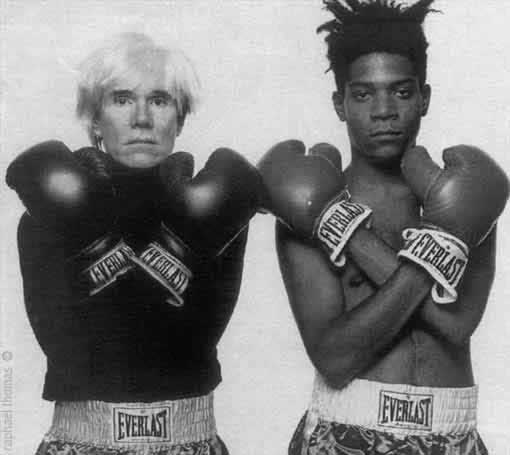
Basquiat with Warhol
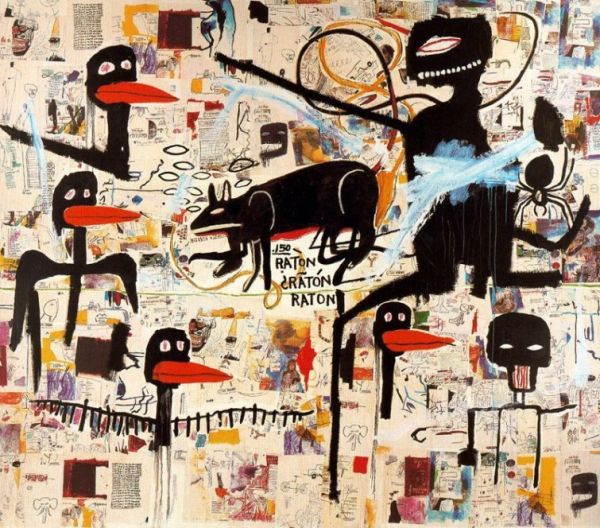
La Animalada
Up until 2002, the highest mark that was paid for an original work of Basquiat’s was $3,302,500 (set on 12 November 1998). On 14 May 2002 Basquiat’s “Profit I” (a large piece of art measuring 86.5″ by 157.5″), owned by heavy metal band Metallica co-founder Lars Ulrich, was put up for auction at Christie’s. It was there that the highest mark for a work of Basquiat’s was set when “Profit I” sold for $5,509,500. The proceedings of the auction are documented in the film Some Kind of Monster. On 15 May 2007, an untitled Basquiat work from 1981 smashed his previous record, selling at Sotheby’s in New York for $14.6 million.
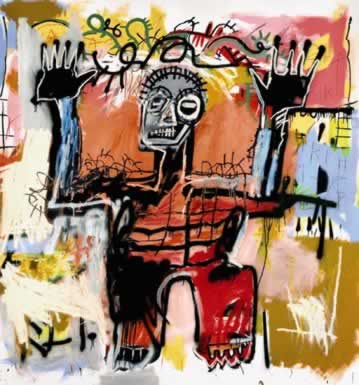
Untitled Acrylic
Reviews
1,217 global ratings
5 Star
4 Star
3 Star
2 Star
1 Star
Your evaluation is very important to us. Thank you.
